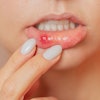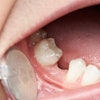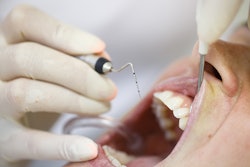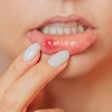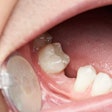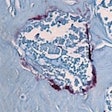
I tell my patients that the onset and progression of disease are like the domino effect. Dominoes standing up one after another in a line, and when one falls down, all the others eventually collapse. In the body, it's the same. When one cell in our body is affected by something, its effects are transmitted to all other cells of our body in some way ultimately.
 Alvin Danenberg, DDS.
Alvin Danenberg, DDS.For example, as we eat foods and expose ourselves to the environment, the dominoes will fall. Nutrition and environmental factors continually and cumulatively affect our body. Effects could manifest instantly, the next day, or decades later. While our body was designed to properly function for an entire lifetime, it was never destined to be damaged on a constant basis. The unhealthy results of the domino effect are chronic degenerative diseases that you see all the time in your practice.
The mouth
Essentially, you and I make our livings talking about the mouth. One theme I return to often with my patients is that the mouth is the beginning of the entire digestive tract.
In a published study in BMC Oral Health (July 26, 20161), Johan Woelber, DDS, a periodontist and researcher in the department of operative dentistry and periodontology at the Center for Dental Medicine, Medical Center, at the University of Freiburg in Germany, wrote about the diet many of our patients consume.
"The modern Western diet in particular with its refined carbohydrates, industrialized meat, proinflammatory fats, and round-robin of diets robs the body of critical vitamins, minerals, fiber, trace elements, and phytochemicals," Dr. Woelber and co-authors wrote. "The key to detecting such problem areas is periodontitis, which is strongly linked to other chronic diseases."
One scenario of the domino effect
Three common food additives in many of the processed foods we eat are maltodextrin, carrageenan, and xanthan gum.
“One theme I return to often with my patients is that the mouth is the beginning of the entire digestive tract.”
These are polysaccharides that are used as thickeners and emulsifying agents in foods. Unfortunately, they also increase unhealthy types of bacteria in the gut, decrease the effects of specific antibacterial cells of the immune system, and damage the one-cell-layer lining of the intestines. They can lead to inflammatory bowel diseases (IBD) such as Crohn's disease and ulcerative colitis, according to a 2016 study in the Annals of Nutrition and Metabolism (June 30, 2016).
In my domino analogy, IBD has been shown to create bacterial changes in the mouth, noted in a 2016 study in APMIS Journal of Pathology, Microbiology and Immunology (October 5, 2016). Once bacterial changes occur in the mouth, dental diseases such as tooth decay and gum disease can flourish.
Specific foods such as grain products, overprocessed sugars, and sodas can increase the severity of dental diseases. Once there is active dental disease, there is an interplay between unhealthy bacteria in the mouth and unhealthy bacteria in the gut associated with IBD, according to a study in the World Journal of Gastroenterology (September 2016, Vol. 22:35, pp. 7963-7972).
In contrast to creating disease, the domino effect could result in healing. For example, a specific diet may offer a potential cure for IBD.
A 2017 study published in Inflammatory Bowel Diseases (November 2017, Vol. 23:11, pp. 2054-2060) involved 15 patients who were living with IBD for an average of 19 years. These individuals were placed on a paleo-autoimmune-protocol (AIP) diet. The plan removed grains, legumes, dairy, refined seed oils, refined sugar, eggs, nightshades, coffee, alcohol, nuts, and seeds from their diets. While that might seem like a lot of restrictions, some of these foods would be reintroduced later on.
However, in a short period of time, the results were amazing. By week six of this restricted diet, 11 of the 15 patients had remission of their IBD signs and symptoms. Recall that the average patient in this study had this disease for an average of 19 years. This result surprised the clinicians.
Starting point of a cure
The mouth can be the starting point of a cure by introducing nutrient-dense, anti-inflammatory foods and eliminating those that stoke the flames of disease. However, I also remind my patients that if they have active gum disease, they need to see a dentist who can treat this disease effectively.
A version of this column first ran on Dr. Danenberg's blog. DrBicuspid.com appreciates the opportunity to reprint it. His book Crazy-Good Living from Elektra Press is available here.
Alvin Danenberg, DDS, practices at the Bluffton Center for Dentistry in Bluffton, SC. He is also on the faculty of the College of Integrative Medicine and created its integrative periodontal teaching module. He also spent two years as chief of periodontics at Charleston Air Force Base earlier in his career. His website is drdanenberg.com.
The comments and observations expressed herein do not necessarily reflect the opinions of DrBicuspid.com, nor should they be construed as an endorsement or admonishment of any particular idea, vendor, or organization.
1Erratum published on October 6, 2016. Editor's note: Erratum concerns noninclusion of funding source in original article.
